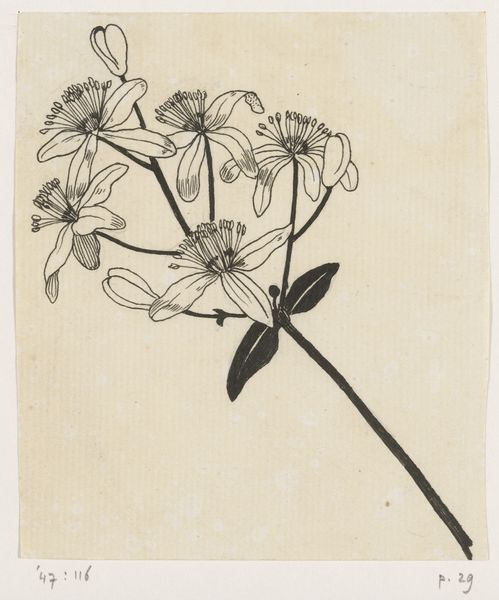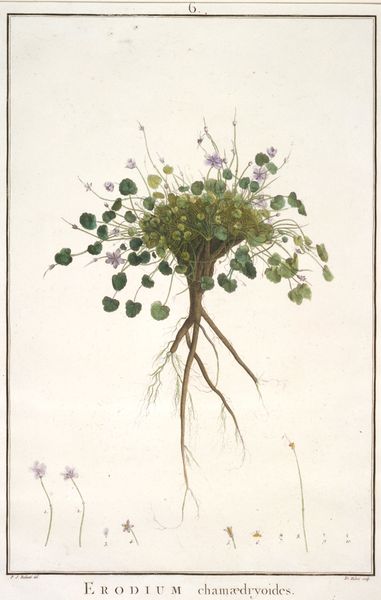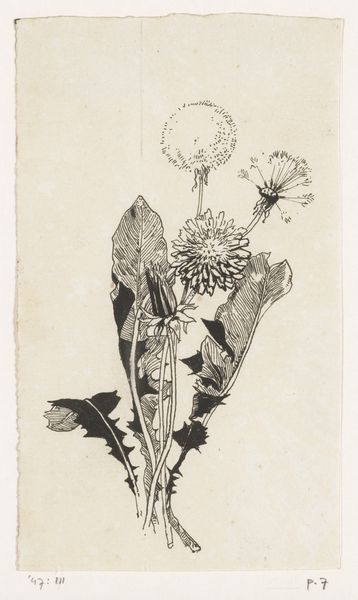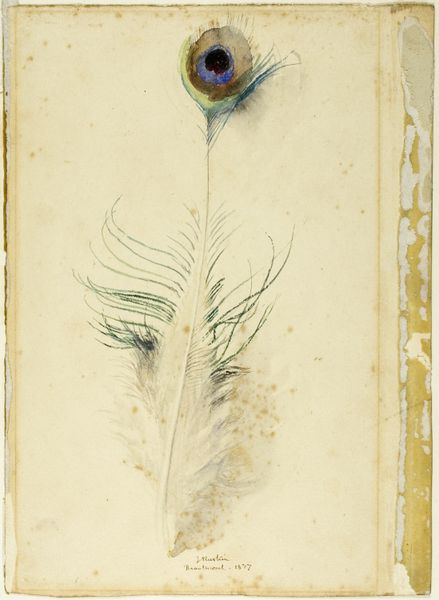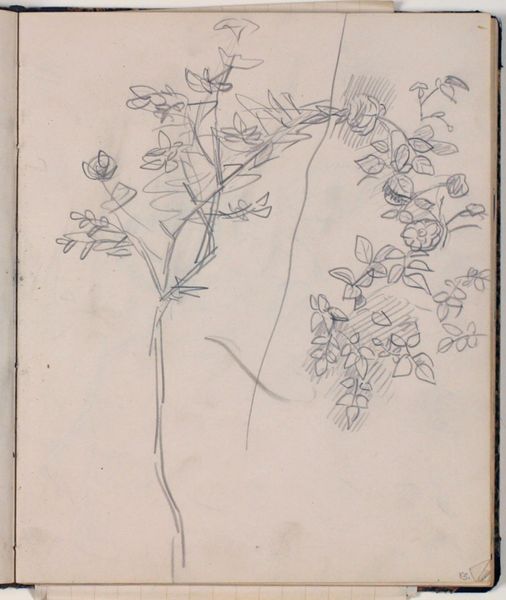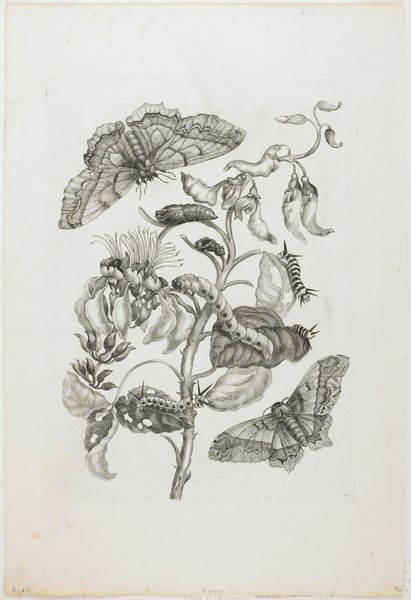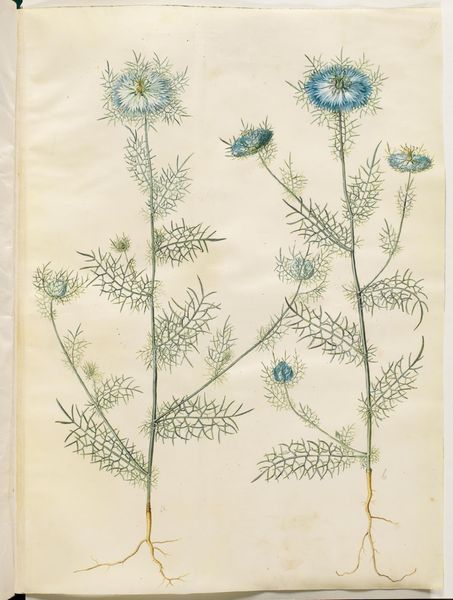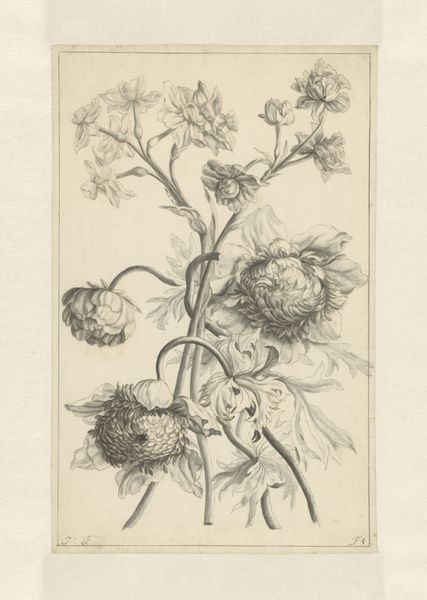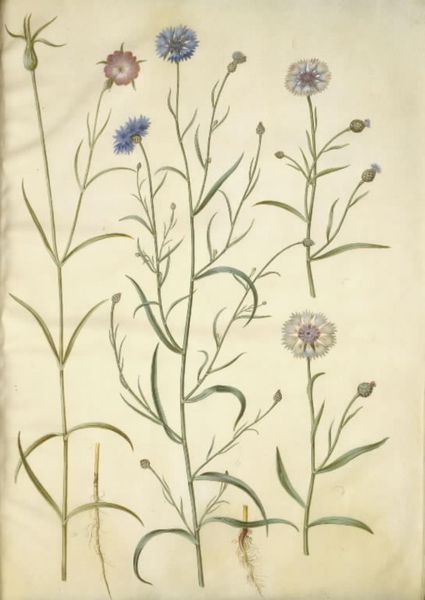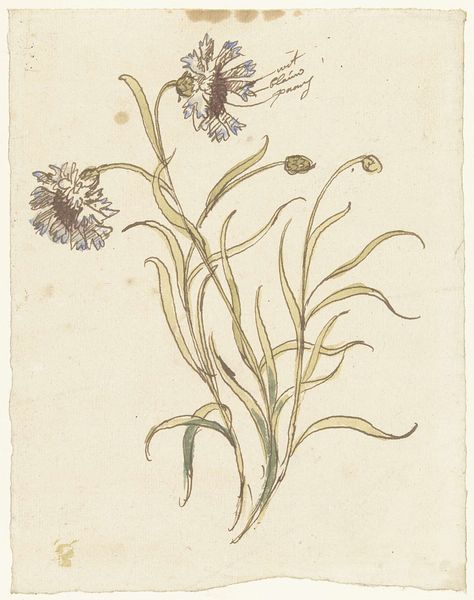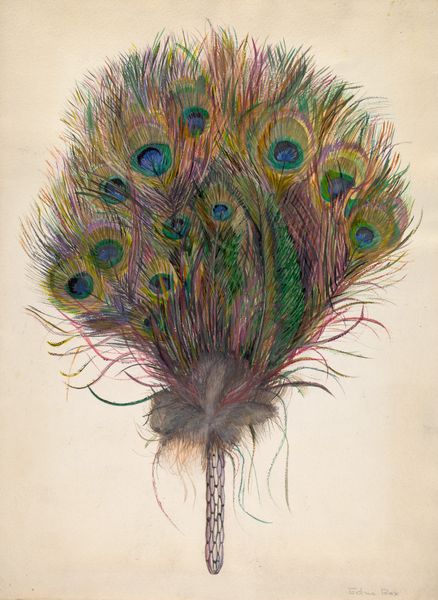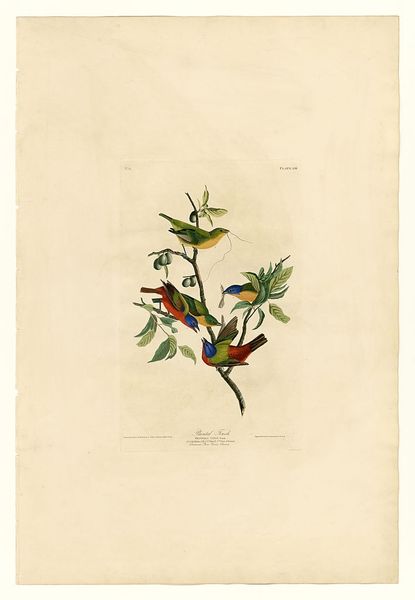
Dimensions: support: 577 x 402 mm
Copyright: © Günter Brus & Arnulf Rainer | CC-BY-NC-ND 4.0 DEED, Photo: Tate
Editor: This is Günter Brus's "Charm - Flower - Ring," a drawing with added media. The botanical elements are so delicate, almost like pressed specimens, but then there's this bold, almost violent, black gesture interrupting it. What do you see in this piece? Curator: I see a commentary on artistic labor and value. Brus juxtaposes the delicate, perhaps time-consuming rendering of botanical forms with crude, almost violent markings. It begs the question: where does value truly reside in artmaking? Is it in skill, time, or intention? Editor: That's a great point! It makes me wonder about the context of art production itself. Curator: Precisely. It also challenges our preconceived notions about the hierarchy between drawing and mark-making. Seeing both techniques present together allows a deeper reflection on artmaking. Editor: I see that now! Thanks for helping me understand this piece in a new light! Curator: Of course! It's always rewarding to analyze the materials and processes behind art, revealing deeper meanings.
Comments
tate 6 months ago
⋮
http://www.tate.org.uk/art/artworks/brus-rainer-charm-flower-ring-t05213
Join the conversation
Join millions of artists and users on Artera today and experience the ultimate creative platform.
tate 6 months ago
⋮
Charm - Flower - Ring and No, Daphne, No! (see Tate T05212) belong to a collaborative body of work produced by Rainer and Brus under the collective title Deepening with Clouding Over. This comprises 74 drawings and an edition of five etchings (see Tate P77235-9) made the following year. All works in this group are based on a series of botanical prints of the type known as nature prints. These were produced during the mid-nineteenth century by the direct impression of such specimens as plants, butterflies, feathers and fossils into a soft metal in order to replicate their structure. The technique was made redundant by the development of photography in the 1890s. The nature prints used for the drawings and related etchings all come from a ten volume work published in Prague in 1873 titled Physiotypia Plantarum Austriacarum by Constantin Freiherrn von Ettingshausen and Alois Pokorny, which depicts predominantly Austrian meadow and marsh plants. Rainer has collected old prints from various sources for many years and has been drawing and painting over other artist's works since around 1960 (see Tate T06778). Charm - Flower - Ring is based on a print from the plant Vicia villosa Roth, known commonly as 'roth'. In all the works in this series Rainer contributed first, usually making dark semi-obliterating marks in pencil or crayon which he thought of as emphasising the formal structure of the existing image. He then passed the prints on, in batches, to Brus, who added bright colours and titles. Rainer later made a trip to Brus's studio to add secondary titles to some of the works. On this print, Rainer made the large black 'V', which partially obscures the plant, in crayon. Brus traced over the plant stems in red and added colours to the blossoms using felt-tip pens. Brus has been making 'Imagepoems' (Bilddichtungen) since 1970, in which he combines image with text to make associative rather than literal connections. The title of this print, in German Reitzblütenreigen, is a made-up word comprising Reitz, which means something charming but also an irritant, Blüten, which describes blossoms and Reigen, which is a round dance and also a ring. Rainer and Brus had not previously collaborated, although both had made work with other artists. They subsequently worked together, both drawing and painting, on a series of black and white photographs. Both artists live and work in Austria, Brus in Graz and Rainer in Vienna. Further reading: Nouvelle Biennale de Paris 1985, exhibition catalogue, Grande Halle de la Villette, Paris 1985, pp.122-3Illustrated Catalogue of Acquisitions 1986-88, Tate Gallery, London 1996, pp.581-2Günter Brus Arnulf Rainer: Vertiefung mit Bewölkung, exhibition catalogue, Kunsthalle Hamburg, Hamburg 1986, pp.73-8 (German text), reproduced (colour) p.32 fig.23 Elizabeth Manchester May 2001
